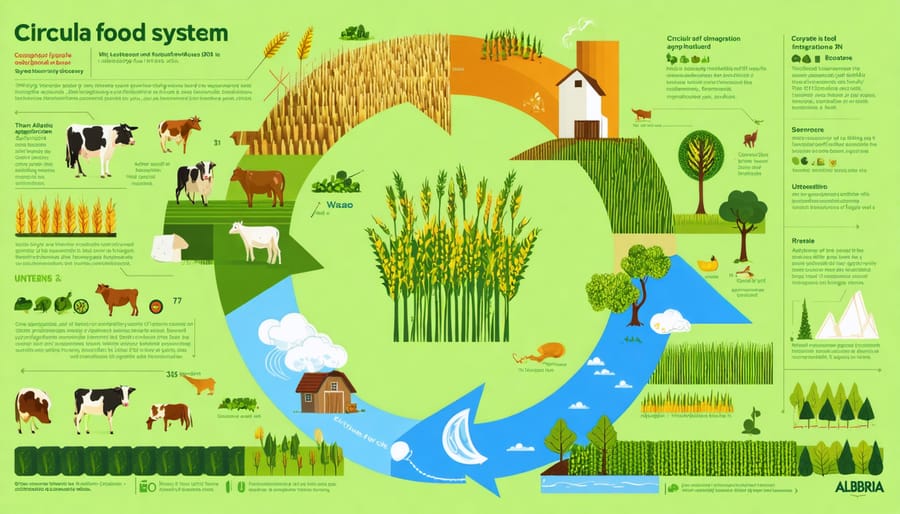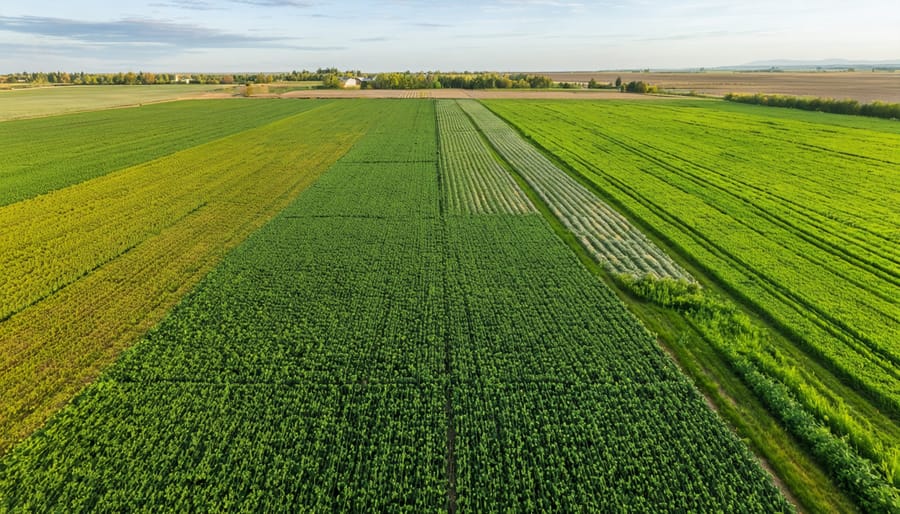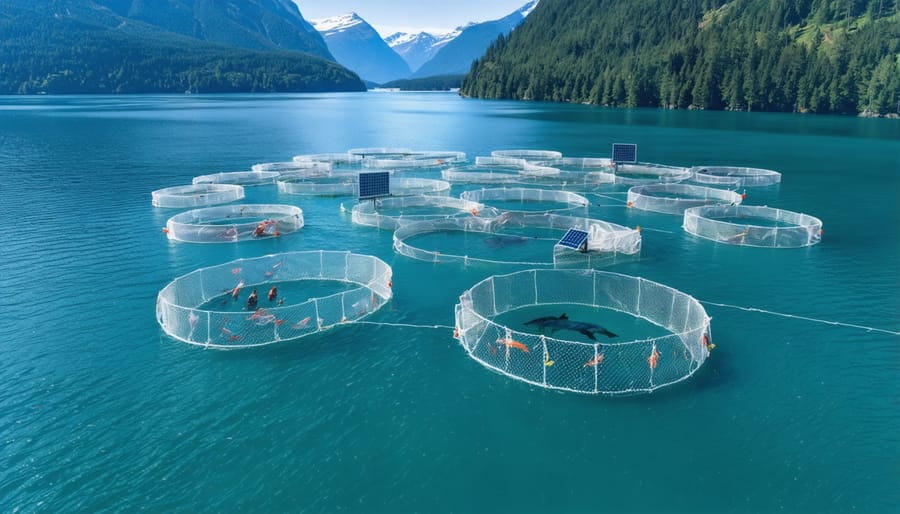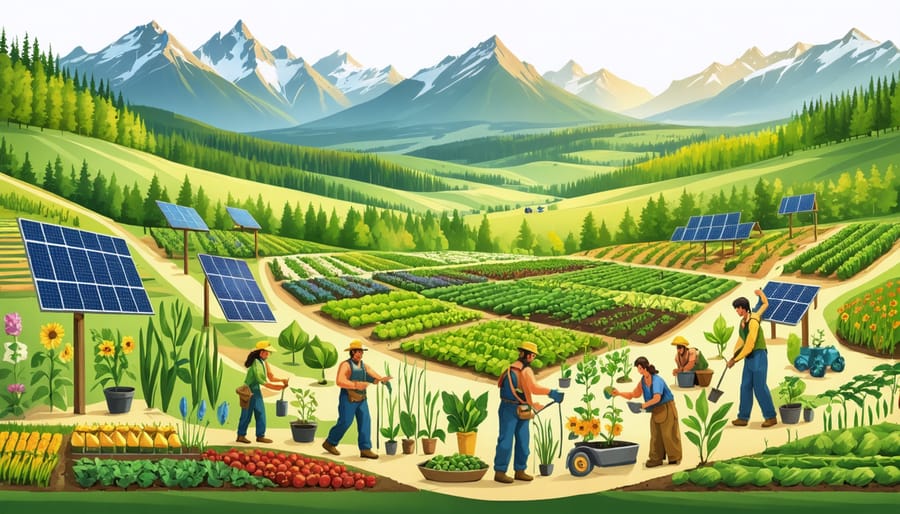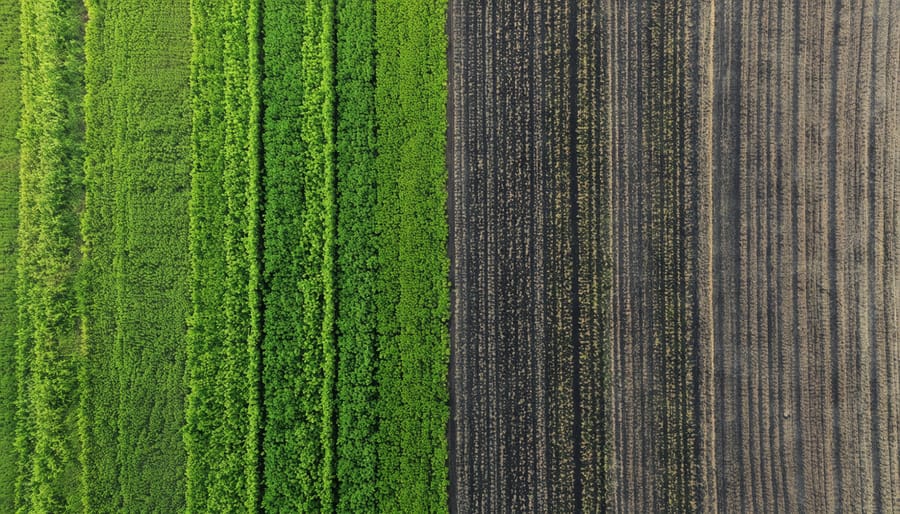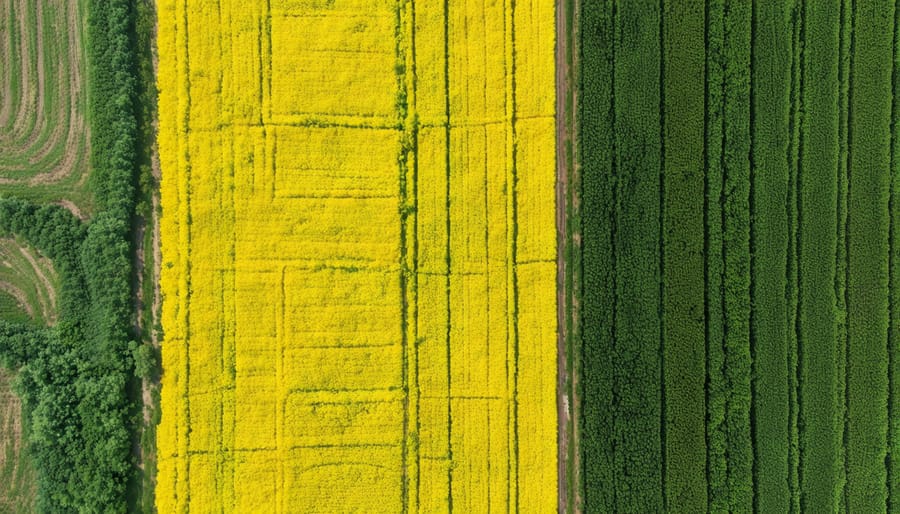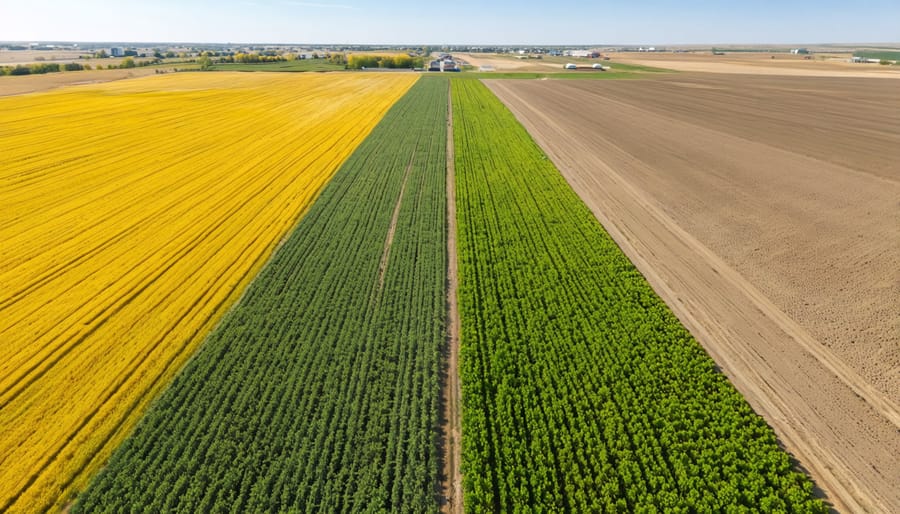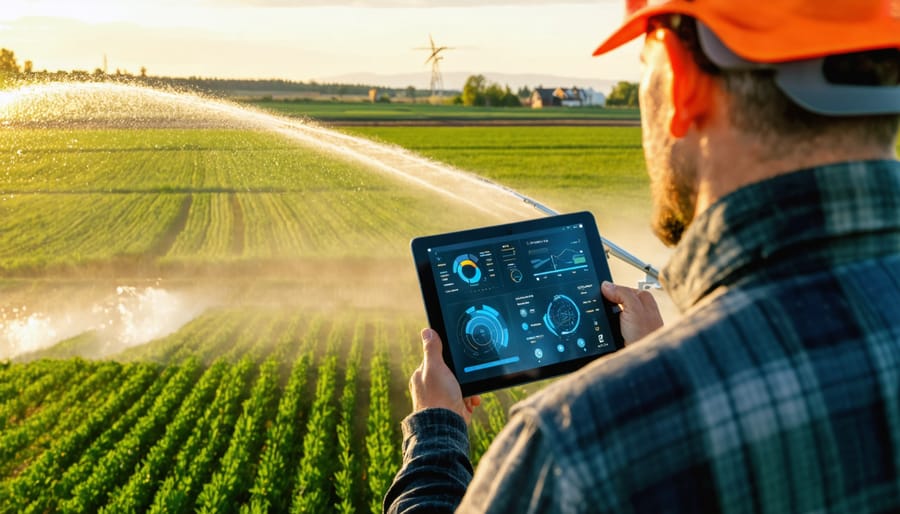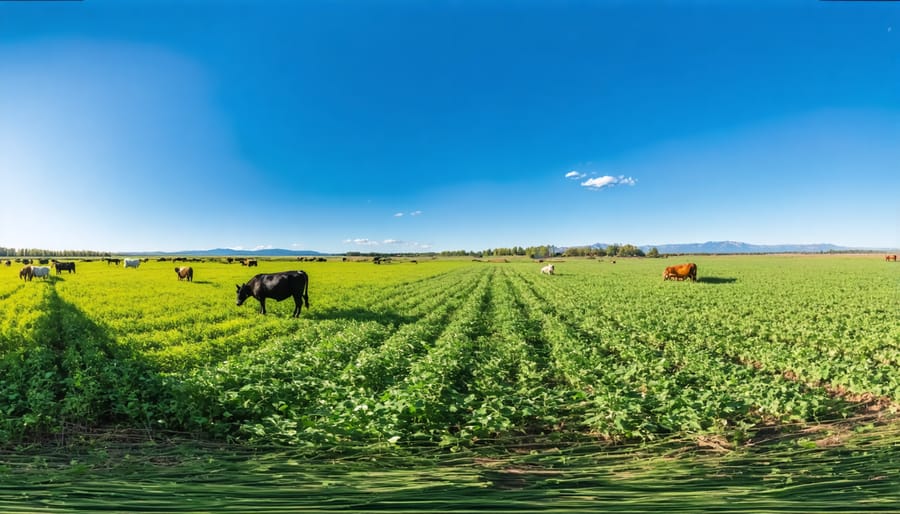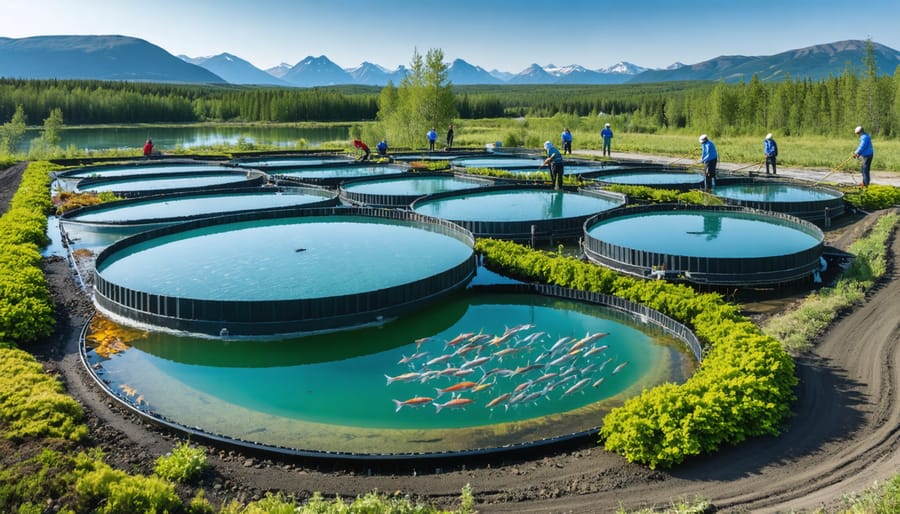In the heart of Canada’s agricultural landscape, a revolutionary transformation is reshaping how we think about food production. Circular food systems are emerging as a powerful solution to combat waste, enhance farm profitability, and strengthen local food security. By reimagining traditional linear farming methods into closed-loop systems, Canadian farmers are pioneering practices that turn what was once considered waste into valuable resources.
From Alberta’s grain fields to Ontario’s orchards, innovative farmers are demonstrating how agricultural by-products can become valuable inputs, creating a self-sustaining cycle that benefits both the environment and their bottom line. These systems integrate crop rotation, livestock management, and waste recovery to minimize external inputs while maximizing resource efficiency. For example, crop residues feed livestock, whose manure then fertilizes fields, creating a natural, cost-effective cycle that reduces dependency on synthetic fertilizers.
This approach isn’t just environmentally sound—it’s economically viable. Canadian farmers implementing circular practices report up to 30% reduction in input costs and significant improvements in soil health. As global food security challenges mount, circular food systems offer a practical, profitable path forward for Canadian agriculture, ensuring our farms remain productive and resilient for generations to come.
What Makes a Food System Truly Circular?
From Linear to Circular: Rethinking Food Production
Traditional food production often follows a straight line: we grow crops, process them, consume the food, and discard the waste. This linear approach, while familiar, puts immense pressure on our resources and environment. Here in Alberta, we’re seeing how sustainable farming methods can transform this old model into something more efficient and regenerative.
Think of circular food systems as nature’s own blueprint – nothing goes to waste. Crop residues become livestock feed or natural fertilizers, food processing by-products find new uses, and organic waste returns to enrich our soil. For example, many Alberta grain farmers are now incorporating livestock to create natural fertilizer cycles, reducing dependency on synthetic inputs while improving soil health.
This shift isn’t just about environmental benefits. Local farmers who’ve adopted circular practices report significant cost savings on inputs and better resilience during challenging seasons. By closing the loop in our food production, we’re not just sustaining our farms – we’re building a stronger agricultural future for generations to come.
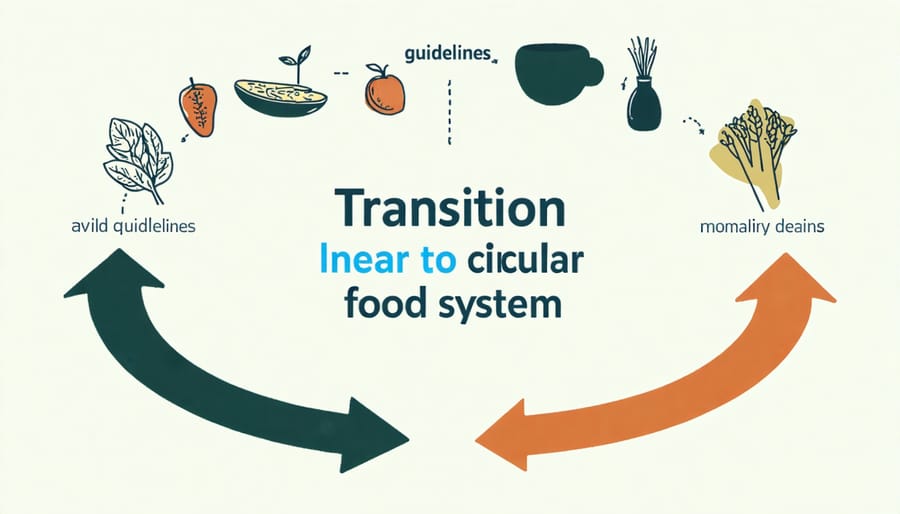
The Six Pillars of Circular Food Systems
A circular food system rests on six fundamental pillars that work together to create a sustainable and regenerative agricultural cycle. First, optimized crop production focuses on maximizing yield while minimizing resource use through practices like precision farming and soil health management. Second, efficient resource utilization ensures that water, nutrients, and energy are used responsibly and recycled whenever possible.
The third pillar, waste reduction and recovery, transforms what was once considered waste into valuable resources, such as converting crop residues into compost or animal feed. Fourth, sustainable livestock integration creates symbiotic relationships between crop and animal farming, where manure becomes a natural fertilizer and grazing helps maintain soil health.
The fifth pillar, local food networks, shortens supply chains and strengthens community food security while reducing transportation emissions. Finally, regenerative practices form the sixth pillar, focusing on techniques that improve soil quality, enhance biodiversity, and capture carbon.
Here in Alberta, many farmers are already implementing these pillars through innovative practices like rotational grazing and biogas production from agricultural waste. These interconnected elements create a resilient food system that benefits both farmers and the environment.
Practical Implementation in Alberta Farms
Waste-to-Resource Conversion
In Alberta’s agricultural landscape, transforming farm waste into valuable resources represents a cornerstone of circular food systems. Local farmers are discovering innovative ways to convert agricultural by-products into useful materials, reducing waste while creating new revenue streams.
One of the most promising developments is agricultural biogas production, where organic waste from crops and livestock becomes renewable energy. The Lethbridge Biogas facility, for example, processes over 100,000 tonnes of organic waste annually, generating enough power for 2,800 homes while producing nutrient-rich fertilizer as a by-product.
Composting at scale has also gained traction, with several community-led initiatives turning crop residues into high-quality soil amendments. Progressive farmers in Red Deer County have implemented on-site composting systems that process up to 500 tonnes of agricultural waste yearly, reducing disposal costs while creating a valuable product for soil enhancement.
Another emerging practice is the conversion of crop residues into livestock feed through fermentation and treatment processes. This approach has shown particular success with wheat straw and corn stalks, providing an economical feed source during winter months when traditional forage might be scarce or expensive.
These waste-to-resource solutions not only support environmental sustainability but also strengthen farm resilience through diversified income streams and reduced input costs. Local agricultural extension services offer guidance and support for farmers interested in implementing these practices.
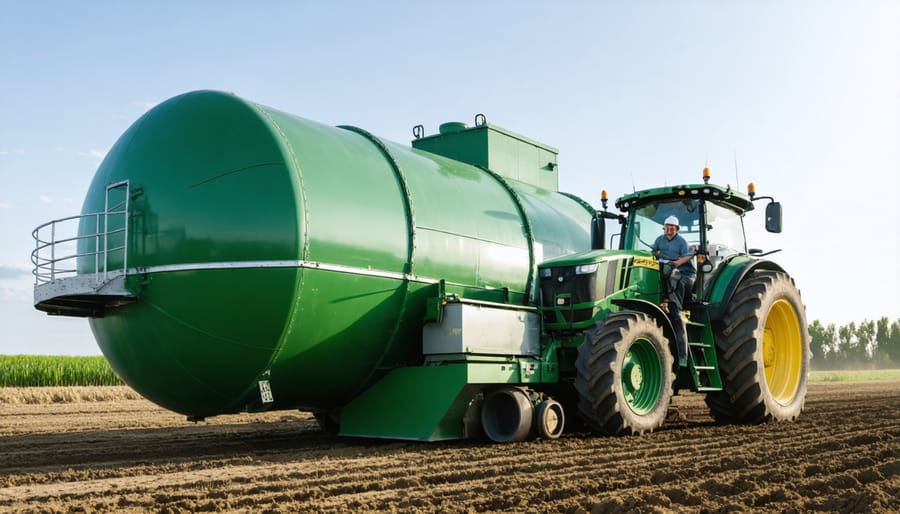
Water Recovery and Reuse
In a circular food system, effective water management plays a crucial role in sustainability and resource efficiency. Alberta farmers are increasingly adopting innovative water conservation techniques that maximize water recovery and reuse throughout their operations.
Leading the way is the integration of closed-loop irrigation systems, which capture and filter water runoff from fields for redistribution. These systems typically reduce water consumption by 40-60% compared to traditional methods. Many Alberta farmers have successfully implemented water recycling stations that collect rainfall and processing water, treating it for multiple uses across their operations.
For greenhouse operations, condensation recovery systems are proving particularly effective, capturing up to 80% of water vapor for reuse. Local success stories include the Leduc County greenhouse cluster, where integrated water management systems have reduced freshwater intake by 65% since 2019.
Advanced filtration technologies, including constructed wetlands and biofilters, are helping farmers maintain water quality while reducing treatment costs. These natural systems not only clean water for reuse but also support local biodiversity and soil health.
For smaller operations, simple solutions like collecting equipment wash water and implementing drip irrigation systems can make a significant difference. The key is starting with manageable changes that align with your farm’s specific needs and gradually expanding your water recovery infrastructure.
Nutrient Cycling Success Stories
Several Alberta farms have demonstrated remarkable success in implementing nutrient cycling practices, showing that circular food systems can thrive in our local climate. The Stevenson Family Farm near Olds has reduced fertilizer costs by 40% through their innovative composting program, which processes crop residues and livestock manure into nutrient-rich soil amendments.
In Lacombe County, the Peterson Agricultural Cooperative has created a community-scale nutrient management system where five neighbouring farms share resources and exchange organic matter. Their collaborative approach has improved soil health across 2,000 hectares while cutting waste management costs by 35% for participating members.
The Mountain View Organic dairy operation near Red Deer showcases how careful manure management can create multiple benefits. By implementing rotational grazing and strategic manure spreading, they’ve eliminated the need for synthetic fertilizers on their pastures while increasing soil organic matter by 2% over three years.
Perhaps most inspiring is the story of Cedar Creek Farms in Leduc, where three generations work together to maintain a closed-loop system. Their integrated crop-livestock operation uses cover crops and green manure, resulting in a 50% reduction in external inputs while maintaining competitive yields. Their success has inspired numerous farm tours and workshops, sharing knowledge throughout the community.
These examples demonstrate that nutrient cycling isn’t just environmentally sound – it’s economically viable for Alberta farmers.
Economic Benefits for Canadian Farmers
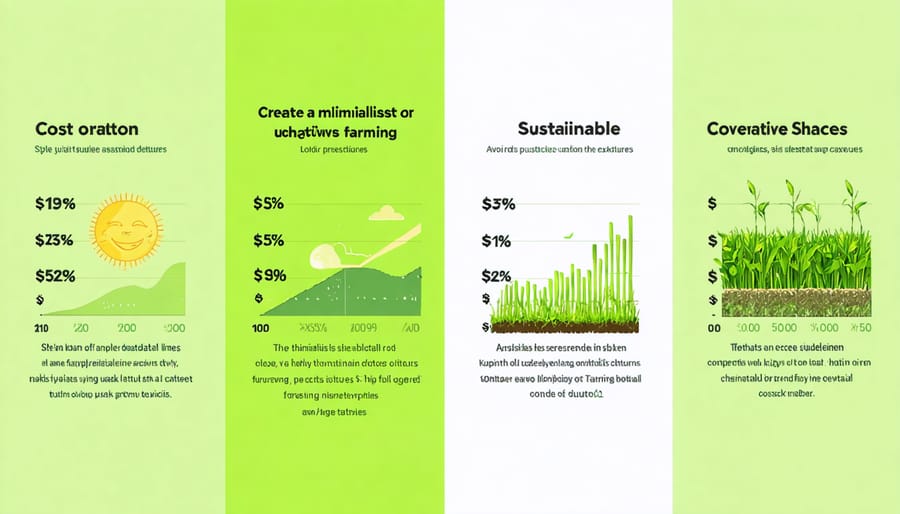
Reduced Input Costs
Implementing circular food systems can significantly contribute to reducing operational farm costs through multiple channels. For Alberta farmers, the savings often begin with decreased input expenses for fertilizers and animal feed. By composting agricultural waste and implementing proper nutrient cycling, farms can reduce their synthetic fertilizer purchases by 25-40% on average.
Take the example of the Morrison Family Farm in Red Deer County, which saved approximately $15,000 in their first year by converting crop residues and livestock manure into nutrient-rich compost. Their integrated system now produces 70% of their soil amendment needs on-site.
Water conservation practices within circular systems also generate substantial savings. Modern water recycling systems, when properly implemented, can reduce irrigation costs by up to 30%. Additionally, farms utilizing cover crops and reduced tillage practices report spending 20-35% less on weed control and soil maintenance.
Feed costs, often the largest expense for livestock operations, can be significantly reduced through circular practices. By integrating crop and livestock systems, farmers can utilize crop residues and by-products as feed supplements. Local producers participating in the Alberta Circular Farm Network report feed cost reductions of $75-100 per head annually for cattle operations.
These savings compound over time as soil health improves and systems become more efficient, creating a positive feedback loop of reduced input requirements and increased profitability.
New Revenue Streams
Implementing a circular food system opens up several profitable opportunities for Canadian farmers. By-products that were once considered waste can become valuable revenue streams, enhancing farm profitability while promoting sustainability.
One significant opportunity lies in converting crop residues into high-value compost and soil amendments. Local landscaping companies and home gardeners often pay premium prices for quality organic materials. For example, an Alberta grain farmer partnered with a local municipality to process straw and chaff into commercial compost, generating an additional $30,000 annually.
Food processing waste presents another lucrative avenue. Vegetable trimmings, fruit pulp, and grain by-products can be transformed into animal feed supplements or biogas through anaerobic digestion. Several Alberta farmers have installed small-scale biodigesters, producing both renewable energy and organic fertilizer for their operations while selling excess power back to the grid.
Innovative farmers are also finding markets for “imperfect” produce through direct-to-consumer programs and food service partnerships. One Red Deer vegetable farm increased revenue by 25% by marketing cosmetically challenged produce at a discount to local restaurants and food processors.
Value-added processing of agricultural waste into consumer products offers yet another income stream. From converting used cooking oil into biodiesel to processing fruit waste into natural dyes, these initiatives can significantly boost farm income while supporting environmental sustainability.
These circular approaches not only generate additional revenue but also reduce waste management costs and strengthen community relationships through local partnerships.
Getting Started with Circular Systems
First Steps for Your Farm
Starting your journey toward a circular food system doesn’t have to be overwhelming. Begin by conducting a thorough assessment of your current farm operations, identifying waste streams and potential opportunities for resource cycling. Keep a detailed log for one month, tracking all inputs, outputs, and waste materials.
Consider implementing cover cropping as an initial step. This practice not only improves soil health but also reduces the need for external inputs. Many Alberta farmers have found success with crops like fall rye or field peas, which add nutrients back to the soil while providing additional revenue streams.
Next, explore partnerships within your local agricultural community. Connect with nearby livestock operations that could use your crop residues, or team up with other farmers to share equipment and resources. The County of Lethbridge, for example, has established successful farmer-to-farmer networks that facilitate these exchanges.
Start small with composting operations, focusing first on easily manageable organic waste. Many successful Alberta farms began by composting crop residues and gradually expanded to include community organic waste streams.
Invest in soil testing and monitoring systems to track your progress. Understanding your soil’s health is crucial for optimizing nutrient cycling and reducing external inputs. Local agricultural extension offices can provide guidance on proper testing procedures and interpretation of results.
Remember, transitioning to a circular system is a journey. Focus on one or two initiatives initially, document your progress, and adjust your approach based on what works best for your specific operation.
Available Support and Resources
Several organizations across Alberta and Canada provide valuable support for farmers transitioning to circular food systems. The Alberta Farm Sustainability Extension Working Group (AFSEWG) offers free consultations and workshops to help farmers assess their current practices and develop circular strategies. They provide practical guidance on implementing composting systems, reducing water waste, and optimizing resource use.
The Canadian Agricultural Partnership (CAP) provides funding opportunities through their Environmental Sustainability and Climate Change programs, with grants covering up to 50% of project costs for circular agriculture initiatives. Local agricultural societies throughout Alberta also organize peer-to-peer learning sessions where experienced farmers share their success stories and lessons learned.
Technical support is available through Agriculture and Agri-Food Canada’s Living Labs, which partner researchers with farmers to test and implement circular farming solutions. The Alberta Agriculture and Forestry department maintains a network of specialists who can provide personalized advice on sustainable farming practices.
For those seeking certification, organizations like the Circular Economy Leadership Canada offer training programs and networking opportunities. Additionally, several regional food hubs across Alberta facilitate connections between farmers, helping to create closed-loop systems for resource sharing and waste reduction.
These resources often include practical tools like soil testing services, waste audit templates, and carbon footprint calculators specifically designed for Canadian agricultural operations.
The transition to a circular food system represents a vital opportunity for Canadian agriculture to lead in sustainable farming practices while maintaining profitability. By implementing strategies like crop rotation, waste reduction, and resource optimization, Alberta farmers can create resilient operations that benefit both the environment and their bottom line. The success stories from local farms demonstrate that these changes are not only possible but profitable. Whether you’re starting with composting, exploring regenerative practices, or developing partnerships with local food processors, every step toward circularity counts. Together, we can build a more sustainable agricultural future that supports our communities, preserves our natural resources, and strengthens our food security for generations to come. Take the first step today by assessing your current practices and identifying areas where you can close the loop in your farming operation.

